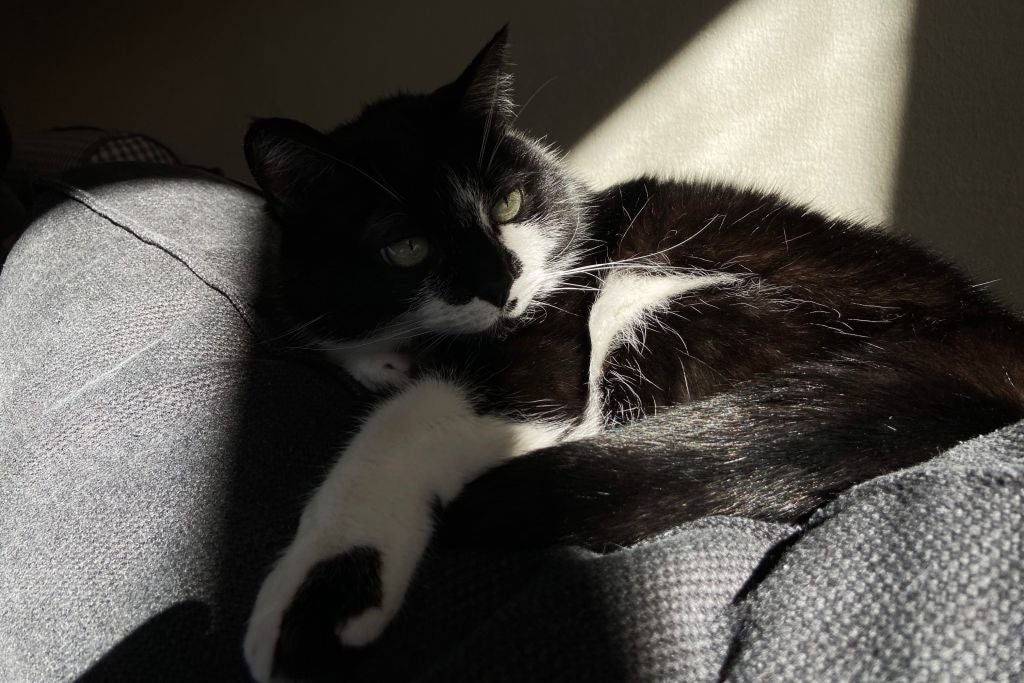By owning a pet, you are doing more damage to the environment than you might realise
Truth-telling about pets can be a painful process but cats and dogs, particularly, are having a devastating impact on the planet


Your support helps us to tell the story
From reproductive rights to climate change to Big Tech, The Independent is on the ground when the story is developing. Whether it's investigating the financials of Elon Musk's pro-Trump PAC or producing our latest documentary, 'The A Word', which shines a light on the American women fighting for reproductive rights, we know how important it is to parse out the facts from the messaging.
At such a critical moment in US history, we need reporters on the ground. Your donation allows us to keep sending journalists to speak to both sides of the story.
The Independent is trusted by Americans across the entire political spectrum. And unlike many other quality news outlets, we choose not to lock Americans out of our reporting and analysis with paywalls. We believe quality journalism should be available to everyone, paid for by those who can afford it.
Your support makes all the difference.When pets can emit twice the carbon emissions of our homes’ electricity and kill up to 200 million wild prey in the UK every year, we cannot stay silent. Unfortunately, in many cases pet ownership is simply another form of destructive consumerism.
For obvious reasons, truth-telling about pets to friends can be a painful process but it is not something we should shy away from.
The People's Dispensary for Sick Animals (PDSA) conducts an annual survey of UK pet ownership. In 2019, they found that 50 per cent of adults own a pet, with a staggering 10.9 million people owning a cat, up from six million in 1981. These figures increased during the lockdown. The Kennel Club reported a 25 per cent rise in pet registrations, with people buying pets on impulse for company during lockdown. Many of these are now being abandoned as people go back to work.
This is completely out of sync with the natural populations of wild bird predators. It is more than 20 times that of stoats and weasels and 38 times more than foxes. Densities of domestic cats can be as high as 2000 per square kilometre in some urban areas.
The Mammal Society estimated in 1998 that 63 million small mammals, frogs and snakes and 27 million birds were killed every year by UK cats. House sparrows, blue tits, thrushes and blackbirds are among the most common killed. Another UK study estimated that each cat kills 18.3 wild prey each year. This would equate to 200 million wild mammals and birds killed in 2019, including 54 million birds
Of real concern is the vulnerability of endangered bird species in habitats close to urban cats. When some species are down to the last few dozen, every one lost to cat-predation may be a final step to extinction. The study also showed cats only consumed 24 per cent of their prey; 28 per cent was brought home to their owners and the rest just left where it was killed.
Another 9.9 million of us own dogs. While the impact of one dog or cat may not be huge, the collective impact of the UK’s 20.8 million pets and nearly a quarter of a billion globally is enormous.
I have designed my garden to be nature friendly. During lockdown, a dunnock’s nest perched on the ivy swaddling my garden-shed gave me enormous pleasure, as the parents flew in and out feeding their young, just a metre from where I sat reading in the sun.
Until of course, it was ravaged by one of the neighbours’ numerous cats. I was heart-broken. Likewise, with my frogs. A parade of cats sits patiently by my pond waiting to devour any frog that mistakenly emerges to rummage in the hedges. I had not known that frogs scream, until one day I heard a heart-rending screech and a frog leapt onto the paper I was reading on the grass, fleeing from the cat hunting it.
But it’s not just wildlife. 20.8 million dogs and cats consuming just one tin or unrecyclable plastic package of cat food per day results in 7.6 billion containers being manufactured each year, just in the UK. Add to this, another 3.6 billion plastic bags for picking up the estimated 1.2 million tons of dog-poop and then there is the issue of disposing of 200 thousand tons of cat waste.
Most clumping cat-litter is made from bentonite clay, which is an unrecyclable mineral mined using open-cast strip mining, which removes trees and soils to get at the clay.
Then of course there is the actual high-carbon, high-cruelty fish, chicken and meat that goes into the tins and packets that eventually produces the poop. The meat content of dog and cat diets, at about 33 per cent, is significantly higher than that of the average American human diet, at about 19 per cent.
This all comes with significant carbon impacts. A 2019 study reported that the average Dutch dog’s carbon emissions just for food were up to 1.4 tonnes and cats were up to 0.25 tonnes. This is nearly double the annual electricity carbon emissions for the average UK household just for dog food and about a third of household electricity emissions for the average cat’s food.
My tough message is that the UK cannot achieve its carbon goals or protect our remaining scraps of biodiversity if we maintain this unsustainable huge number of pets.
So, please, gently tell your friends not to get a new pet or to replace their current pet when it passes to pet-heaven, unless they absolutely (absolutely!) have to.
This article was amended on 5 May 2021 to change a reference to 200 million tons of cat waste to the correct figure - 200 thousand tons.


Join our commenting forum
Join thought-provoking conversations, follow other Independent readers and see their replies
Comments